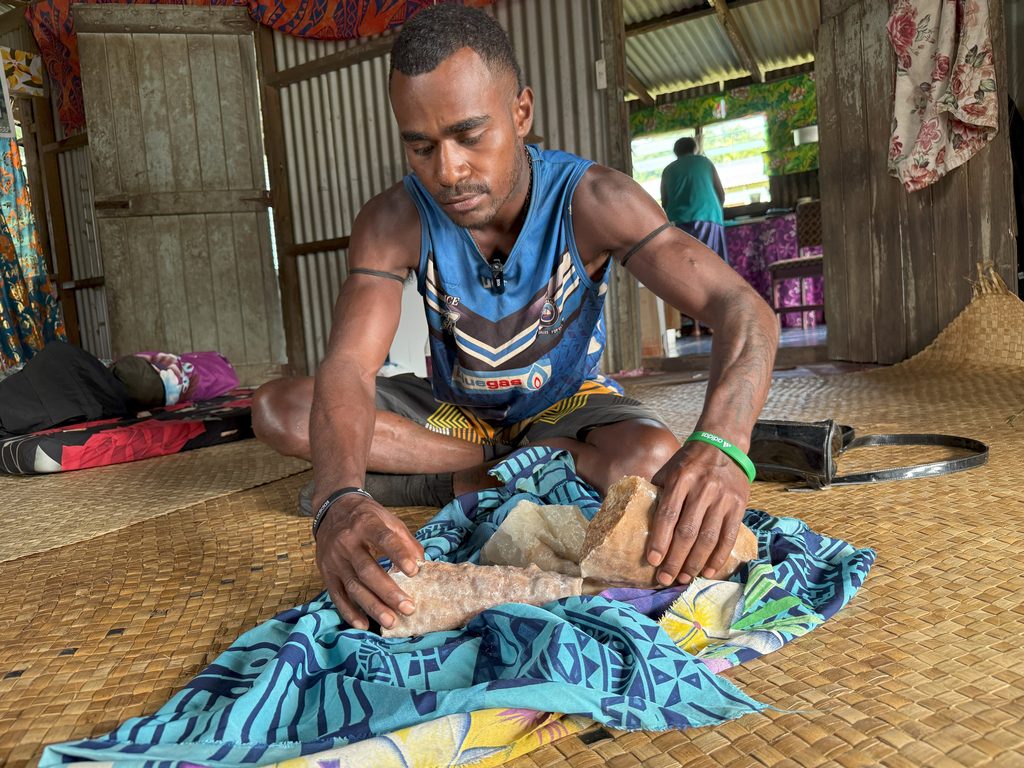Note: Some of the events described in this story may disturb some readers.
On a blistering day in January, Peni Kedremau, 20, was hard at work.
He was at his farm in a place known as Uluivuda, an area that towers above the village of Nalidi, Nakorotubu in Ra. His wife, Sera, was with him.
As far as he was concerned, it was just another day of sweat, dirt and grime.
Suddenly, a strong rush of cold wind hit him. It hit Sera too; she felt drowsy and went to sleep instantly.
Peni moved toward the wall of porous limestone rock at the edge of his teitei, feeling the draught of chilly air grow stronger.
Little did he know he was about to stumble across something memorable – a sweet discovery.
Locals called the massive shrub-coated rocks that rule most of Uluivuda’s skyline sule – ashen faced and jagged.
“I touched the grass on the side of the rock and my hand went right through,” he said, “it was a cave with a small opening and so dark that my eyes could feel its thickness.”
The couple returned the next day, psyched up and better equipped to enter what was literally the belly of a cavernous beast that had been sleeping for thousands of years.
To beat the scotching heat, Peni and Sera left the village at dawn, not on horseback or by car. They scaled many high-rise hills on foot, before the fiery sun came out.
But the exercise was no ordinary feat. It quickly turned out to be an experience from a cross between a fantasy movie and a story from National Geographic.
“The moment I stood up inside, I felt something beyond the ordinary,” Peni continued.
“There was supernatural presence in the cave and I lost the ability to speak.”
Peni claimed meeting two warrior-looking iTaukei men wearing an array of precious gemstones around their necks, hands and legs. They were also armed with war clubs.
The man on his left looked serious and never spoke a word. The man of his right, however, seemed outgoing and sociable. He did all the talking.
“Follow us, we are about to show you what nobody else has seen,” Peni quoted them as saying.
What Peni discovered took his breath away. It was something he had ever seen before.
He saw crystalized spikes of stalactites jutting from the ceiling of the cave like cathedral chandeliers. Touching them made a peculiar sonorous sound.
There were mound-shaped stalagmites too, growing out of the cave floor. At some places, the stalactites and stalagmites merged to form columns of various thicknesses.
He also found sheets of calcium carbonate that form along cave surface called flowstone. Flowstone hangs downward and may create curtain-like sheaves. For this reason they are also called ‘draperies’.
Peni could only marvel at what his eyes saw in the dark subterranean world that enveloped him. A few places were graced by the strange, branch-like shapes of helictites.
Because water does not drip off the helictite, the water coats its surface creating strange shapes that sometimes look like grass.
“I was in a trance,” Peni revealed, “I remember visiting three caves and everywhere I went I was in awe.”
He claimed he was taken to a treasure trove of precious stones. One cave had gold bullion and another had water springing from within a jaw formation that looked like a shark’s gaping mouth.
Various formations reminded him of his totemic fish and traditional ancestors, others depicting life in coastal part of Fiji.
He also claimed seeing a chair made of pure gold and was instructed to sit.
“It was so massive that it could accommodate three humans.”
Skeletal remains were also discovered at different spots in the cave, one with very long thigh bones and one with a humongous set of jaws. Some were spotted next to pieces of long extinguished ancient bamboo torch called ‘vuru’.
The bones have since been removed for proper burial within the village boundary.
After hours of adventuring with the two strange beings, Peni said he emerged from the cave stunned, finding it difficult to comprehend what he saw and experienced.
He later told villagers about his strange encounter in the cave, igniting a wave of interest among villagers of Nalidi and those from nearby communities and beyond (including The Sunday Times team).
Water is a commodity that villagers have been removing from the cave since Peni’s discovery.
My limited knowledge of science told me cave water could be unsafe for drinking. That’s because it enjoyed little or no opportunity for filtration of contaminants.
But villagers believe water in the cave has healing properties.
“I had a bad case of drimi (a type of itchy fungal infection of the skin) on both my hands. I washed my hands with water from the cave and the itch disappeared in a day or two,” Sera said.
The other item people have been removing by breaking are the fragile stalactite and stalagmite that have taken centuries to form and can be easily damaged by touching or human breath.
Expert say when we touch the pretty and colourful formations inside a cave known as speleothem, we may leave behind oils, amino acids, dead skin cells and dust which can affect their growth.
Most villagers believe the cave is a new one, which brings a real promise of mineral riches and a bright future for Nalidi. Some believe it had been previously discovered but had been sealed for a long time by a dense overgrowth.
One thing is for sure, Uluivuda has many deep secrets about Fiji’s past, some of it buried deep within its highland cave labyrinth, possibly one of the country’s most extensive limestone cave system.
More Nalidi stories next week.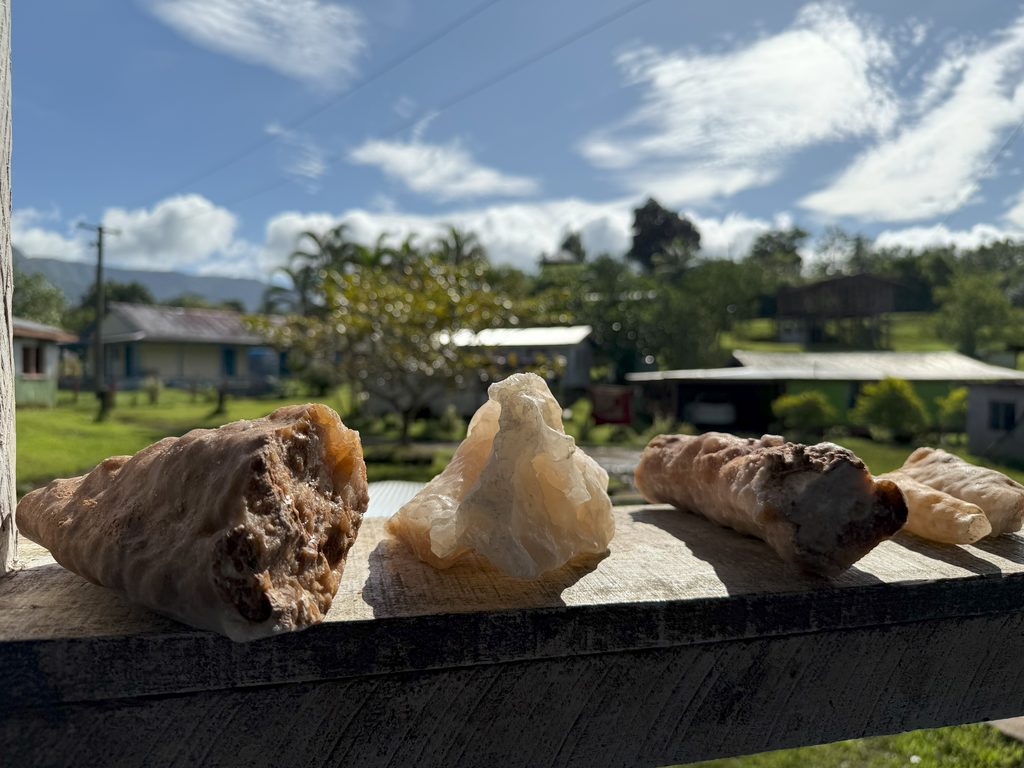
Different limestone formation Peni collected from the cave.
Picture: ALIFERETI SAKIASI
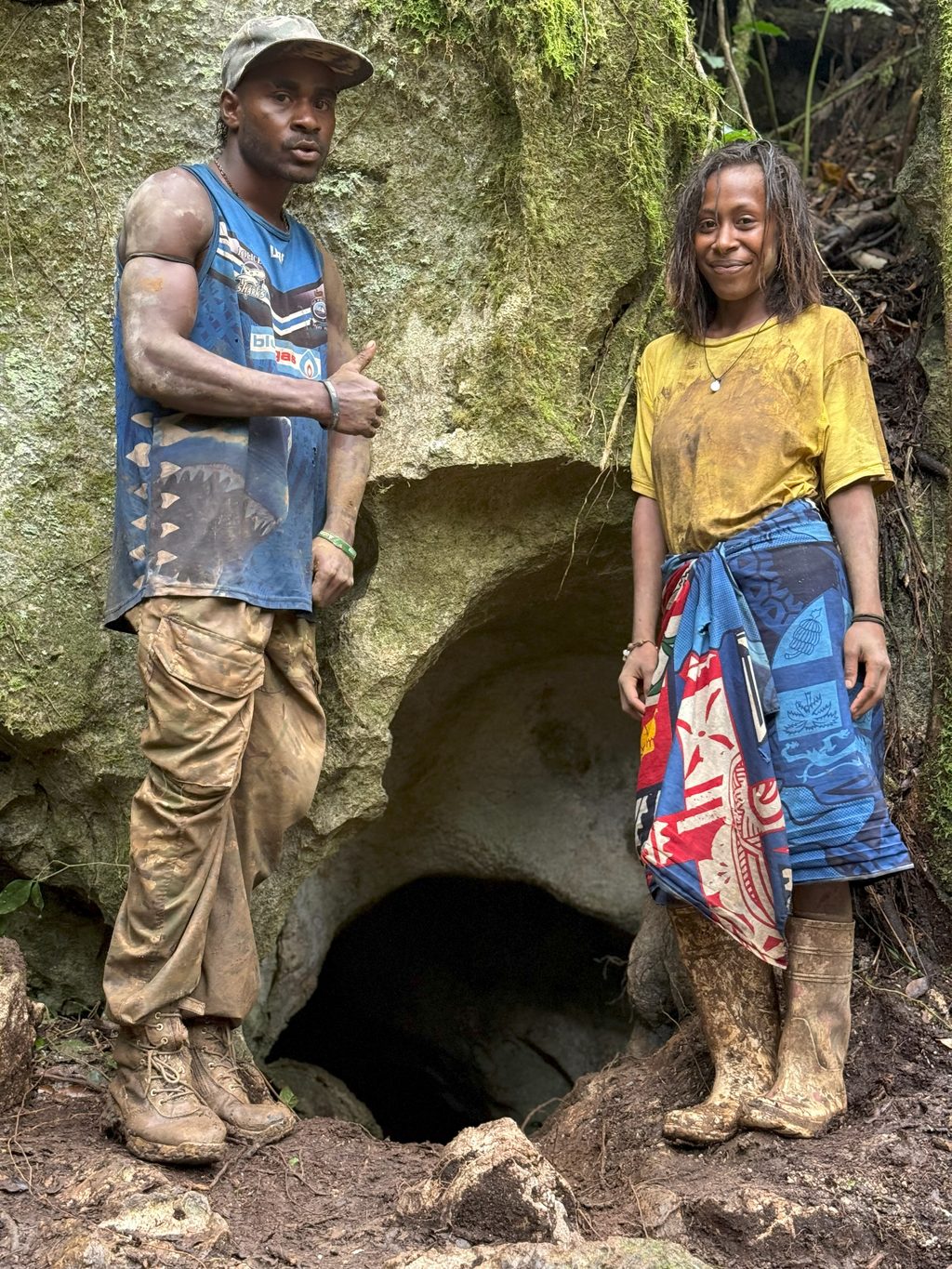
Peni and his wife, Sera Toga, stand in front of the cave they discovered near their plantation in January.
Picture: ALIFERETI SAKIASI
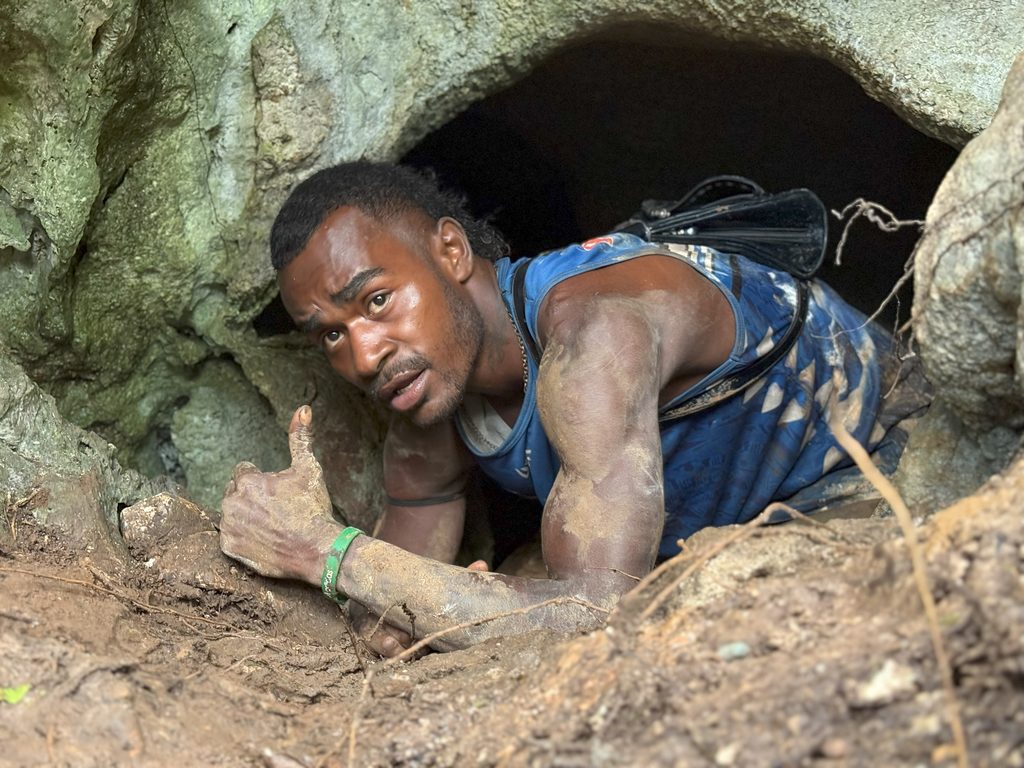
Peni emerges from inside the cave he discovered.
Picture: ALIFERETI SAKIASI
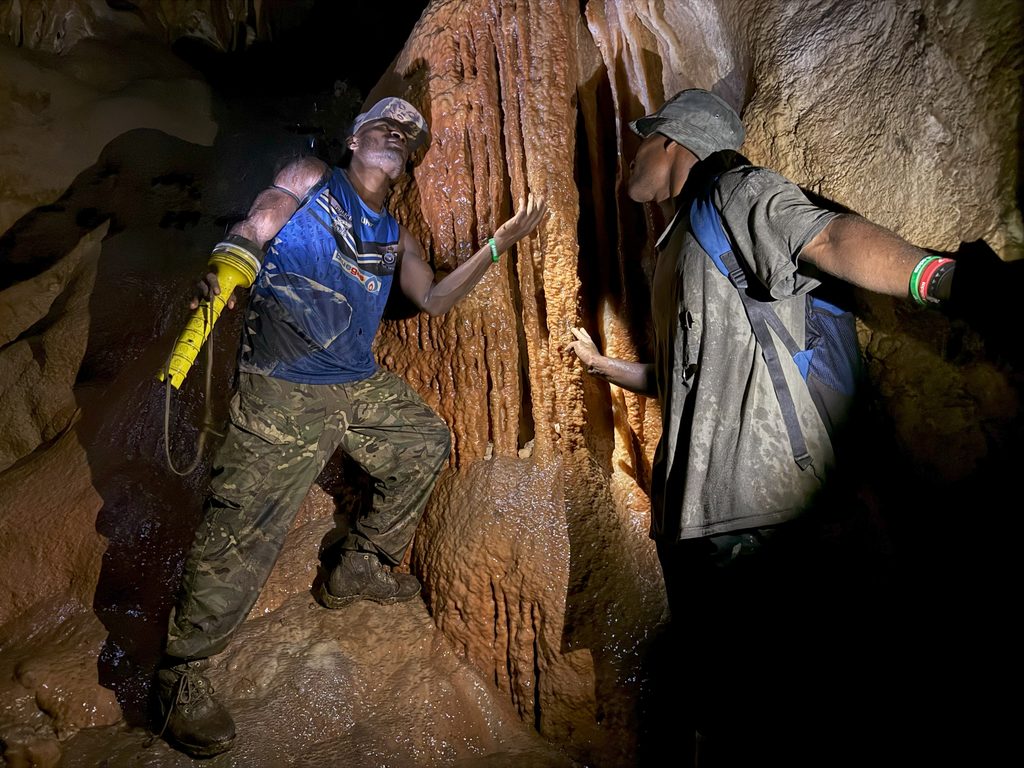
Peni and a fellow villager pose for a shot inside the cave. Picture: ALIFERETI SAKIASI

